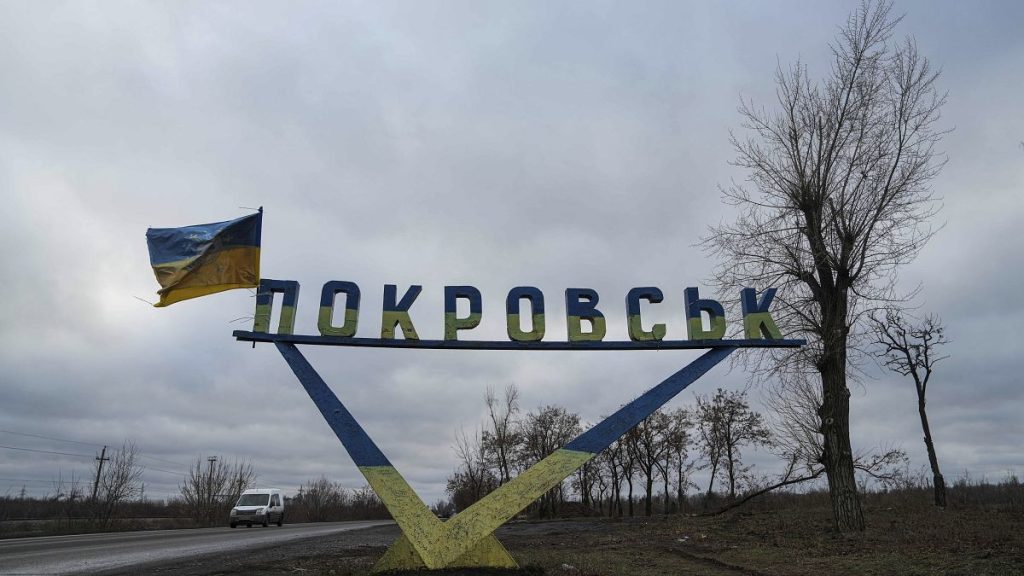Paragraph 1: The Donetsk Offensive and Strategic Implications
As 2024 draws to a close, the conflict in eastern Ukraine continues to escalate, with Russian forces making steady advances in the Donetsk region. Their current focus lies in capturing the towns of Pokrovsk and Kurakhove, strategically important locations that could further solidify Moscow’s control over the region. The recent capture of Trudove and Uspenivka, completing the occupation of the "Uspenivka pocket" south of Kurakhove, marks a significant tactical victory for Russia. This advance not only strengthens their position but also puts pressure on Ukrainian forces, potentially forcing a retreat and jeopardizing the defense of nearby settlements. The loss of Kurakhove, a town with a pre-war population of 18,000, would be a symbolic blow to Ukraine and a strategic gain for Russia, furthering their territorial ambitions in the Donbas region.
Paragraph 2: Russian Tactics and Ukrainian Resistance
The Russian military strategy seems to involve a combination of intense ground assaults and focused artillery barrages, aimed at overwhelming Ukrainian defenses and creating pockets of vulnerability. Following the capture of the Uspenivka pocket, Russian forces are reportedly regrouping and preparing for further offensives in the direction of Shevchenko and Andriivka, potentially creating another pocket and further isolating Ukrainian troops. This tactic of encirclement aims to force Ukrainian withdrawals and minimize Russian casualties while maximizing territorial gains. Ukrainian forces, despite facing relentless pressure, are putting up determined resistance, engaging in heavy defensive battles to slow down the Russian advance. However, the ongoing Russian offensive and the reported difficulties in troop withdrawals suggest a challenging situation for Ukrainian defenders.
Paragraph 3: The Human Cost of the Conflict: Military Losses
The relentless fighting in eastern Ukraine has come at a staggering human cost for both sides. Estimates from various sources, including the UK and the Ukrainian Armed Forces General Staff, indicate that Russian losses since the beginning of the full-scale invasion exceed 768,000, a figure that encompasses dead, wounded, missing, and captured personnel. The months of November and December 2024 witnessed particularly heavy casualties, with daily losses reaching a peak of over 2,000 Russian troops in November, the highest recorded since the invasion began. These figures underscore the intensity of the fighting and the heavy price paid by Russian forces in their push to gain territory. While Ukraine has not released official figures recently, earlier statements by President Zelenskyy indicated substantial losses for the Ukrainian military as well, further highlighting the devastating human toll of the conflict.
Paragraph 4: The Human Cost of the Conflict: Civilian Casualties
The war’s impact extends far beyond military losses, with a heavy toll on the civilian population. According to United Nations data, over 12,340 civilian deaths have been documented since February 2022. The UN has also noted a disturbing trend in 2024, with an increase in civilian casualties attributed to aerial bombs and long-range weapons compared to the previous year. In November alone, approximately 42% of civilian casualties were caused by Russian long-range weapon attacks, a significant surge from previous months. This escalation in the use of long-range weaponry against populated areas raises serious concerns about the protection of civilians and potential violations of international humanitarian law.
Paragraph 5: Intensification of Russian Air Campaign
The latter months of 2024 witnessed a significant intensification of the Russian air campaign against Ukrainian cities. Data from the Ukrainian Air Force reveals the extensive use of drones and guided bombs, with over 2,576 drones deployed in November and a daily average of at least 100 guided bombs dropped during the first three weeks of November. This sustained air offensive reflects a deliberate Russian strategy to target critical infrastructure, disrupt logistical networks, and demoralize the Ukrainian population. The increased targeting of civilian areas with aerial bombardments highlights the growing humanitarian crisis and the potential for further escalation of violence.
Paragraph 6: Geopolitical Context and Future Outlook
The ongoing conflict in eastern Ukraine has profound geopolitical implications, impacting regional stability and international relations. The continued Russian offensive raises concerns about the potential for further escalation, especially given the significant human cost and the increasing use of long-range weaponry. The international community faces the challenge of finding a peaceful resolution to the conflict, while also addressing the humanitarian crisis and holding those responsible for war crimes accountable. The future of the conflict remains uncertain, with both sides seemingly committed to their respective objectives. The international community’s response and the resilience of the Ukrainian people will play crucial roles in shaping the outcome of this ongoing tragedy.

